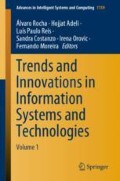Abstract
Classical Petri Nets are not suitable for describing systems with an adaptable layout. A model based on Symmetric Nets (SN) has been recently introduced. It is composed of a SN emulating the behaviour of any base-level Place/Transition net (encoded as a marking), and an API for basic net-transformation primitives. In this paper, we discuss about the automation of the modelling process and the issues related to analysis complexity, proposing a more effective formalization of the base-level. The discussion is accompanied by a simple running example.
Access this chapter
Tax calculation will be finalised at checkout
Purchases are for personal use only
Notes
- 1.
All the SN sources (GreatSPN.PNPRO files) are publicly available at https://github.com/SELab-unimi/sn-based-emulator.
- 2.
Its implementation is available at http://www.di.unito.it/~depierro/SNex/.
References
Baarir, S., Beccuti, M., Cerotti, D., De Pierro, M., Donatelli, S., Franceschinis, G.: The GreatSPN tool: recent enhancements. SIGMETRICS Perform. Eval. Rev. 36(4), 4–9 (2009). https://doi.org/10.1145/1530873.1530876
Cabac, L., Duvigneau, M., Moldt, D., Rölke, H.: Modeling dynamic architectures using nets-within-nets. In: Ciardo, G., Darondeau, P. (eds.) Applications and theory of Petri Nets 2005, pp. 148–167. Springer, Heidelberg (2005)
Camilli, M., Capra, L., Bellettini, C.: PNemu: an extensible modeling library for adaptable distributed systems. In: Donatelli, S., Haar, S. (eds.) Application and Theory of Petri Nets and Concurrency, pp. 80–90. Springer International Publishing, Cham (2019)
Capra, L.: A pure SPEC-inscribed PN model for reconfigurable systems. In: 2016 13th International Workshop on Discrete Event Systems (WODES), May 2016, pp. 459–465 (2016). https://doi.org/10.1109/WODES.2016.7497888
Capra, L., Camilli, M.: Towards evolving Petri Nets: a symmetric nets-based framework. IFAC PapersOnLine 51(7), 480–485 (2018). https://doi.org/10.1016/j.ifacol.2018.06.343. 14th IFAC Workshop on Discrete Event Systems WODES 2018
Capra, L., De Pierro, M., Franceschinis, G.: Computing structural properties of symmetric nets. In: Campos, J., Haverkort, B.R. (eds.) Quantitative Evaluation of Systems, pp. 125–140. Springer International Publishing, Cham (2015)
Chiola, G., Dutheillet, C., Franceschinis, G., Haddad, S.: Stochastic well-formed coloured nets for symmetric modelling applications. IEEE Trans. Comput. 42(11), 1343–1360 (1993)
Hoffmann, K., Ehrig, H., Mossakowski, T.: High-level nets with nets and rules as tokens. In: Proceedings of the 26th International Conference on Applications and Theory of Petri Nets, ICATPN 2005, pp. 268–288, Springer-Verlag, Heidelberg (2005)
Jensen, K., Rozenberg, G. (eds.): High-level Petri Nets: Theory and Application. Springer-Verlag, London (1991)
Lakos, C.: Object Oriented Modelling with Object Petri Net, pp. 1–37. Springer, Heidelberg (2001). https://doi.org/10.1007/3-540-45397-0_1
Reisig, W.: Petri Nets: An Introduction. Springer-Verlag, New York (1985)
Valk, R.: Object Petri Nets. In: Desel, J., Reisig, W., Rozenberg, G. (eds.) Lectures on Concurrency and Petri Nets. LNCS, vol. 3098, pp. 819–848. Springer, Heidelberg (2004)
Weyns, D., Iftikhar, M.U., de la Iglesia, D.G., Ahmad, T.: A survey of formal methods in self-adaptive systems. In: Proceedings of the Fifth International C* Conference on Computer Science and Software Engineering, C3S2E 2012, pp. 67–79. ACM, New York (2012). https://doi.org/10.1145/2347583.2347592
Author information
Authors and Affiliations
Corresponding author
Editor information
Editors and Affiliations
Rights and permissions
Copyright information
© 2020 The Editor(s) (if applicable) and The Author(s), under exclusive license to Springer Nature Switzerland AG
About this paper
Cite this paper
Capra, L. (2020). A Petri Net-Based Model of Self-adaptive Systems and Its (Semi-)Automated Support. In: Rocha, Á., Adeli, H., Reis, L., Costanzo, S., Orovic, I., Moreira, F. (eds) Trends and Innovations in Information Systems and Technologies. WorldCIST 2020. Advances in Intelligent Systems and Computing, vol 1159. Springer, Cham. https://doi.org/10.1007/978-3-030-45688-7_70
Download citation
DOI: https://doi.org/10.1007/978-3-030-45688-7_70
Published:
Publisher Name: Springer, Cham
Print ISBN: 978-3-030-45687-0
Online ISBN: 978-3-030-45688-7
eBook Packages: Intelligent Technologies and RoboticsIntelligent Technologies and Robotics (R0)

